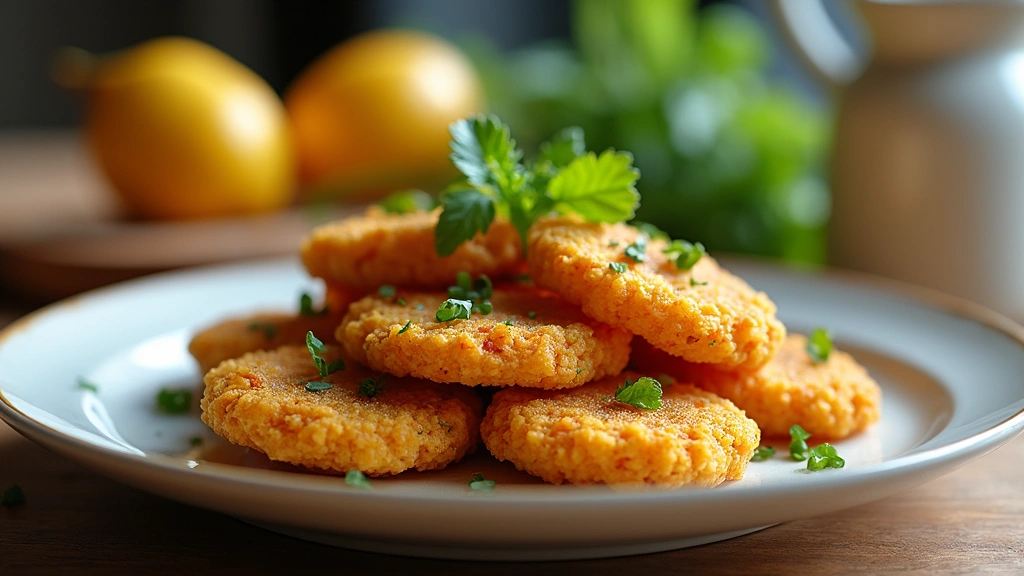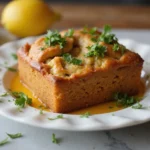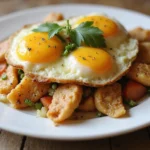Finger millet, also known as ragi, is a nutritious grain that’s been a staple in many Indian households for centuries.
Its nutty flavor and unique texture bring a wholesome twist to traditional breakfast dishes.
I remember my grandmother preparing ragi mudde with a side of spicy chutney every Sunday, filling our home with warmth and comfort.
With its rich history and health benefits, these finger millet recipes are not only delicious but also a fantastic way to start your day.
The History and Cultural Significance
• Finger millet recipes for breakfast healthy & traditional trace their origins to Southern India, particularly Karnataka, where it has been cultivated for over 2,000 years.
• The dish evolved over decades as cooking techniques advanced, with finger millet being incorporated into various forms such as porridge, dosa, and idli, becoming the beloved versions we know today.
• In Indian culture, especially in rural areas, this dish traditionally appears at festivals and celebrations, symbolizing prosperity and health.
• While many variations exist across different regions, the authentic version maintains a unique earthy flavor and high nutritional value that sets it apart from imitations.
Recipe Overview
Nutritional Information (per serving)
Ingredients
Essential Equipment Guide
Non-stick Pan: A non-stick pan is crucial for making dosa or pancakes, as it prevents sticking and ensures an even golden-brown finish. Look for one with a sturdy base for consistent heat distribution.
Mixing Bowl: A large mixing bowl is essential for combining the ragi flour with water and other ingredients. Ensure it’s deep enough to prevent spills while mixing.
Steamer: A steamer is important for preparing idli, allowing them to cook evenly while retaining moisture. Traditional tiered steamers work best, but you can also use a bamboo steamer.
Preparation Methods
Fermentation: Fermentation is a crucial step in making dosa and idli, as it develops flavor and improves digestibility. Combine the ragi flour, yogurt, and water, and let it rest overnight in a warm place to allow natural fermentation.
Steaming: Steaming is used for cooking idli, which helps retain moisture and creates a fluffy texture. Ensure the steamer has enough water and steam the idli batter in molds for about 10-12 minutes until cooked through.
Mixing Techniques: Proper mixing techniques ensure a smooth batter consistency for dosa. Use a whisk or a wooden spoon to combine ingredients thoroughly, avoiding lumps.
Step 1: Gather Ingredients
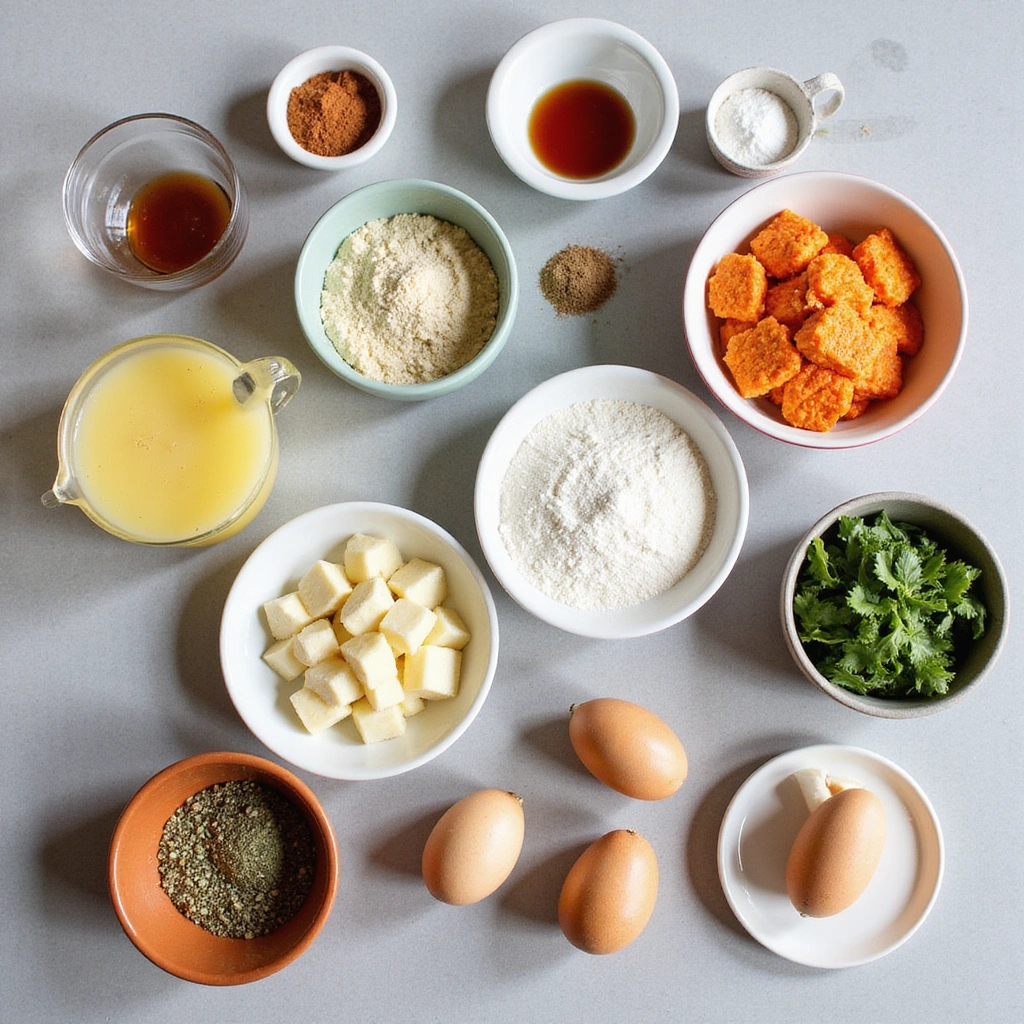
Begin by gathering all the necessary ingredients for your finger millet recipes.
Ensure that you have everything laid out for easy access while cooking.
Check for freshness, especially with the yogurt and any vegetables you plan to use.
This will streamline the cooking process and help you stay organized.
Step 2: Prepare the Batter
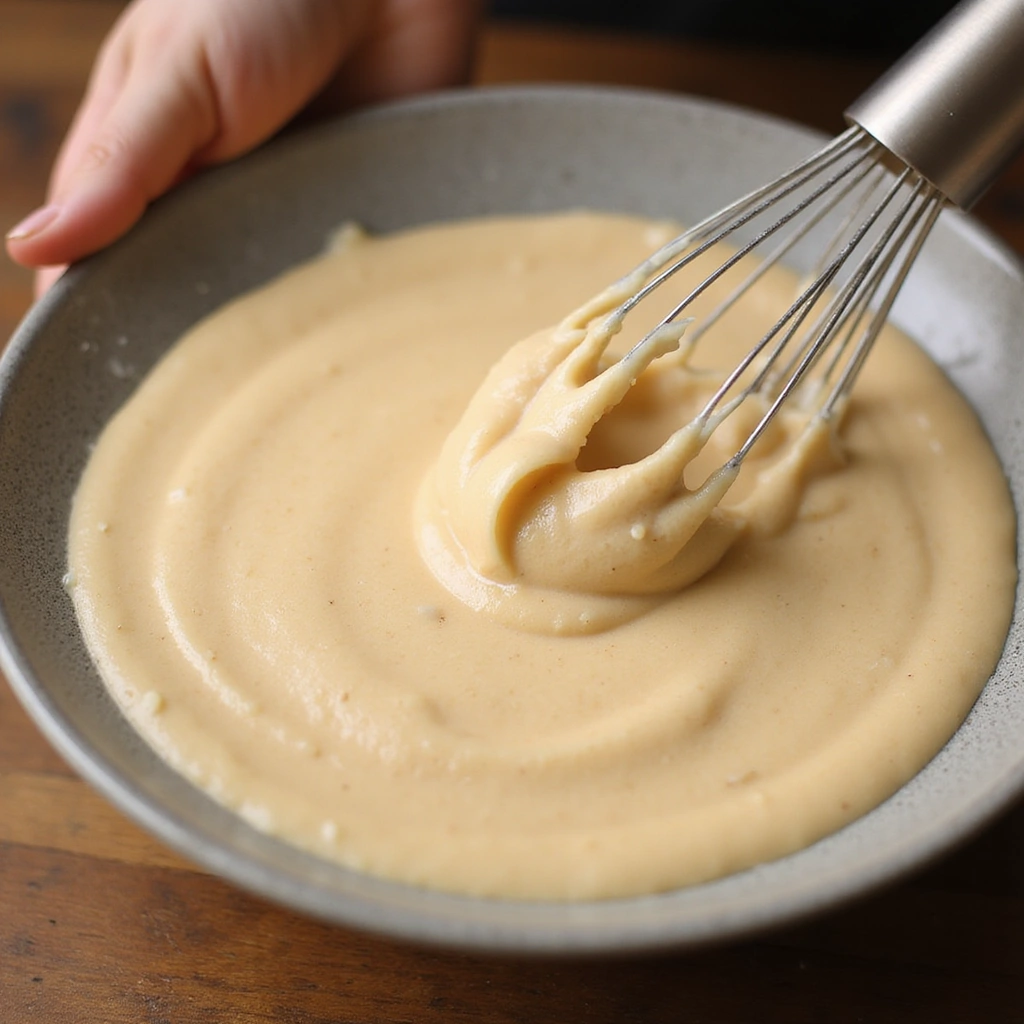
In a mixing bowl, combine the finger millet flour, yogurt, water, and salt.
Stir well until the mixture is smooth and free of lumps.
The batter should be of pouring consistency, similar to pancake batter.
Cover and let it ferment overnight in a warm area.
Step 3: Prepare Idli Molds
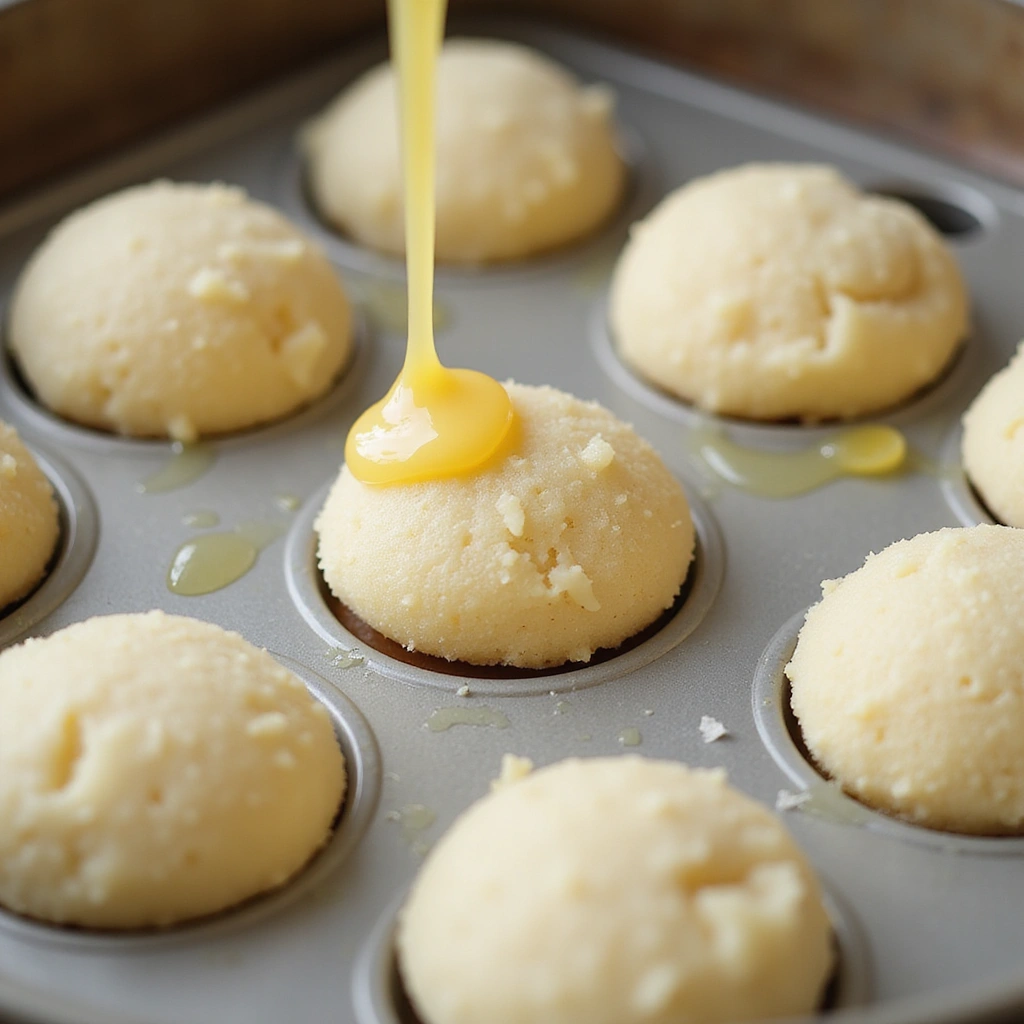
Grease the idli molds with a little ghee to prevent sticking.
Make sure to coat each compartment evenly.
This will help the idlis come out smoothly after steaming.
Set the greased molds aside while you prepare the batter.
Step 4: Steam the Idlis
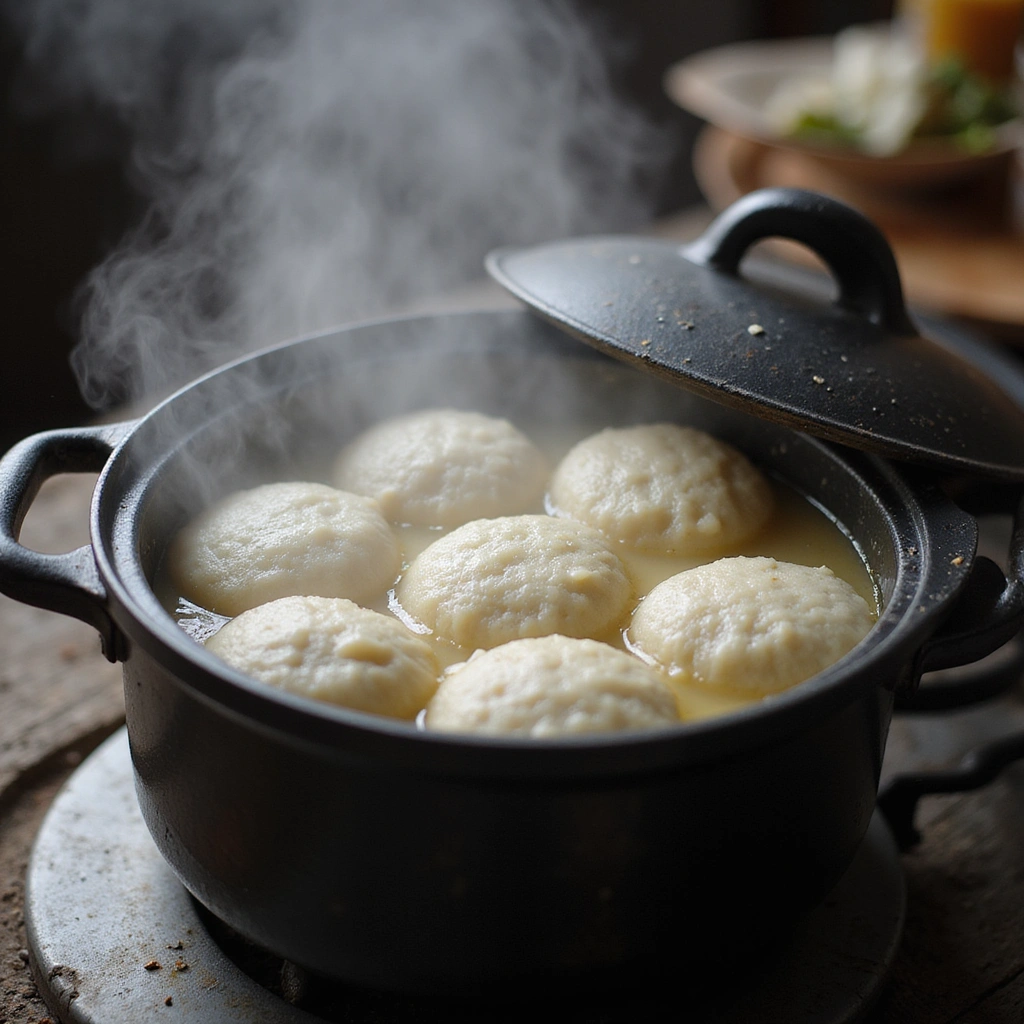
Fill the steamer pot with water and bring it to a boil.
Pour the fermented batter into the greased idli molds, filling each compartment about ¾ full.
Carefully place the molds into the steamer and cover with a lid.
Steam for about 10-12 minutes until the idlis are fluffy and cooked through.
Step 5: Prepare Dosa on Pan
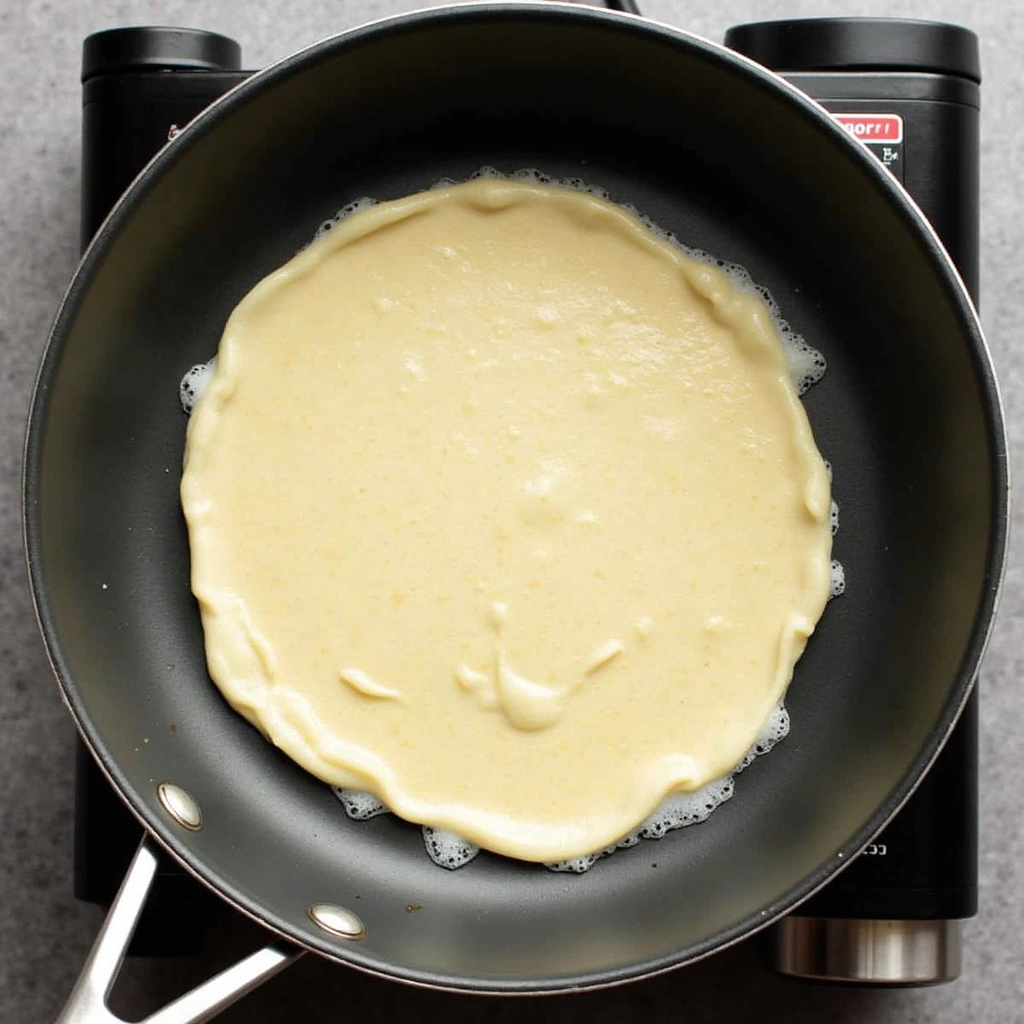
Heat a non-stick pan over medium heat until hot.
Pour a ladleful of batter onto the pan and spread it out in a circular motion.
Cook until the edges start to lift and the bottom turns golden brown.
Drizzle a little ghee on top for added flavor.
Step 6: Flip the Dosa
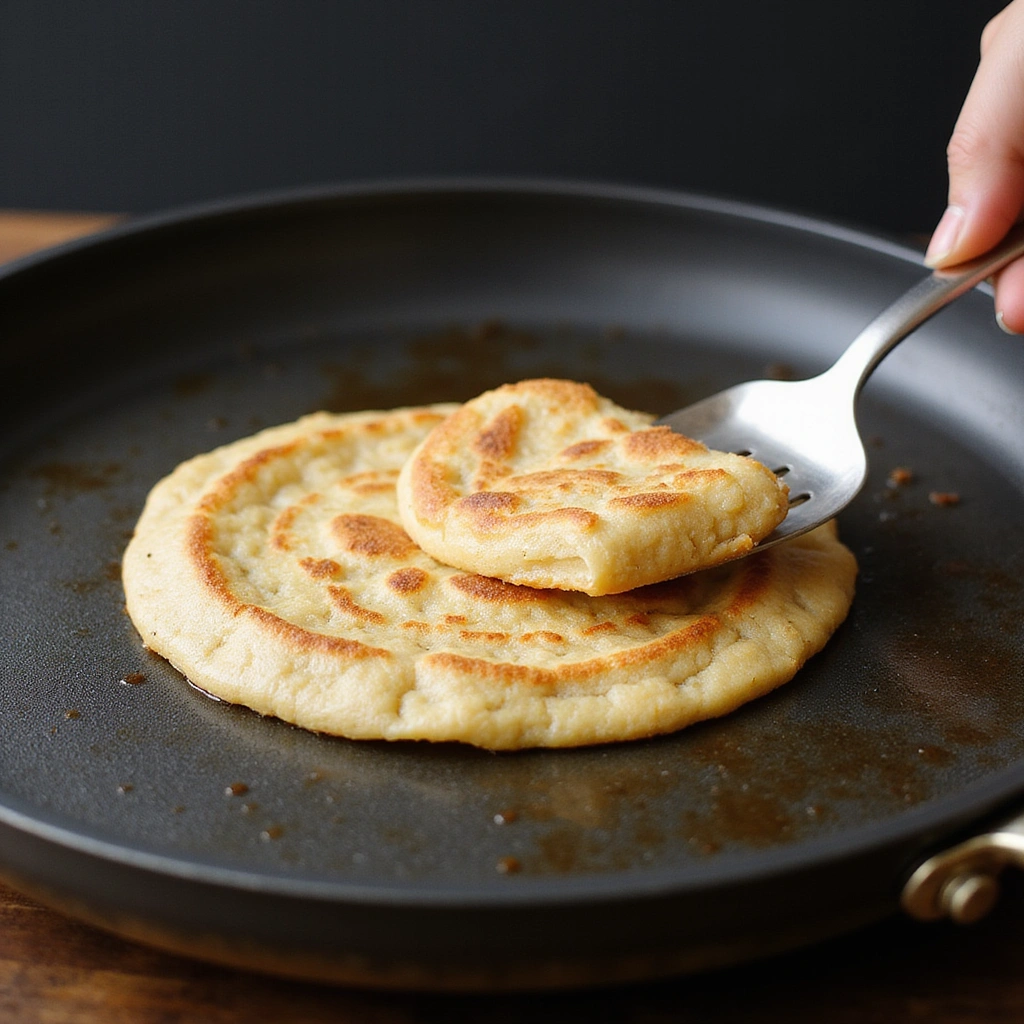
Once the dosa is golden brown on one side, carefully flip it over using a spatula.
Cook the other side for another 2-3 minutes until crispy.
Look for a nice golden color and a crisp texture.
Remove from the pan and keep warm while you prepare the rest.
Step 7: Assemble the Breakfast Plate
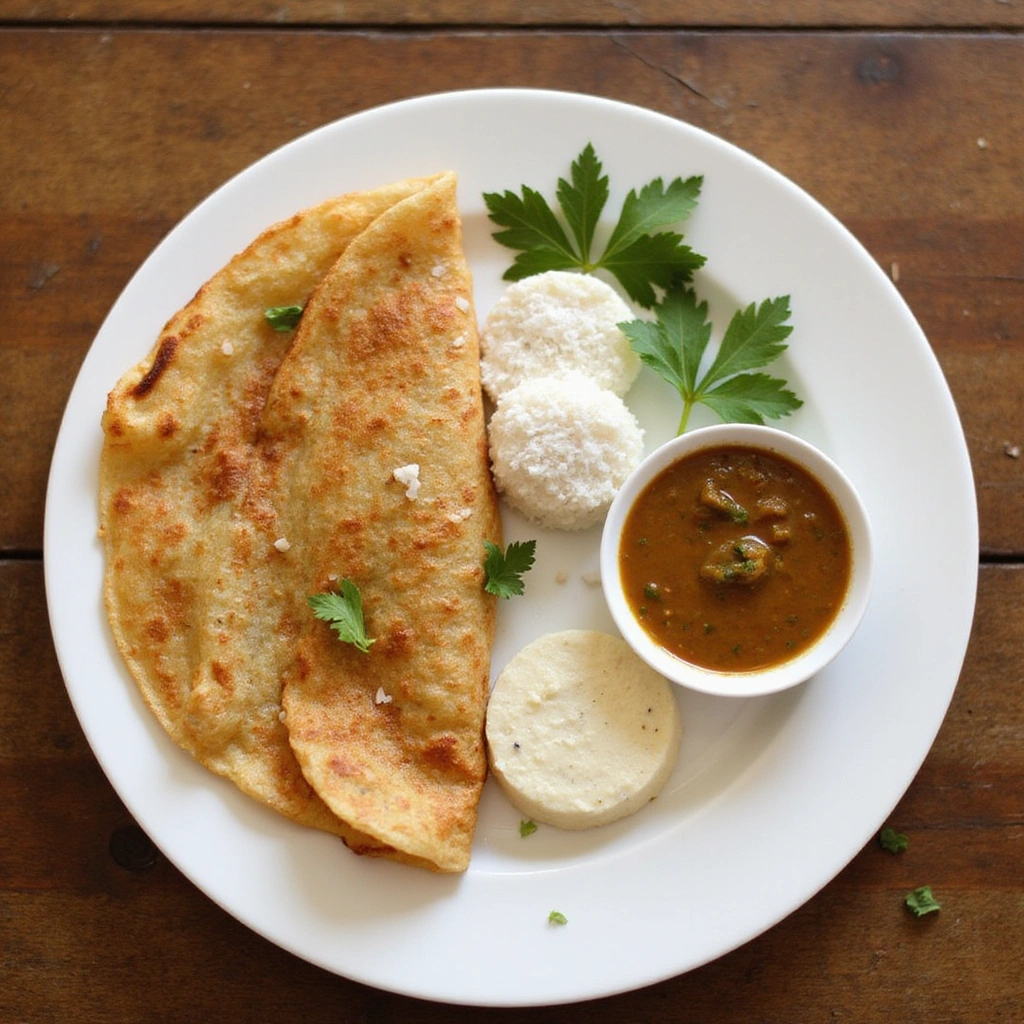
Once all the dosas and idlis are prepared, arrange them on a serving plate.
Add some fresh coriander on top for garnish.
Serve with coconut chutney and sambar for a traditional touch.
This colorful presentation will make your breakfast inviting.
Step 8: Enjoy Your Meal

Gather your family or friends around the breakfast table.
Serve the warm idlis and dosas with chutney and sambar.
Take a moment to enjoy the flavors and textures of the meal.
This traditional breakfast is not just nutritious but also a delightful way to connect with loved ones.
Critical Timing and Temperature Guide
Fermentation Time: Allow the batter to ferment for at least 8 hours, depending on the room temperature. You can tell it’s ready when it has doubled in volume and has a slightly sour smell. Avoid fermenting for too long, as it can become overly sour.
Steaming Time: Steam idlis for 10-12 minutes, ensuring the water is boiling before placing them in the steamer. The idlis are done when they are firm to the touch and a toothpick inserted comes out clean. Avoid over-steaming, as this can make them dry.
Cooking Dosa: Cook dosa on medium heat, about 2-3 minutes per side, until golden brown. The pan should be hot enough that a drop of water sizzles on contact. Avoid cooking on too high heat, which can burn the dosa.
Pro Tips for Finger Millet Recipes For Breakfast Healthy & Traditional
• Ingredient Selection: Choose the freshest finger millet flour you can find, as it greatly impacts the flavor and texture of the final dish.
• Preparation Secret: Adding a pinch of sugar to the batter can enhance fermentation and improve flavor.
• Temperature Management: Ensure the batter is kept in a warm place for fermentation, ideally around 30°C (86°F).
• Texture Enhancement: For extra fluffiness, blend the batter until smooth, which incorporates air and increases volume.
• Flavor Layering: Experiment with spices like cumin or coriander in the batter for added depth of flavor.
• Make-Ahead Strategies: Prepare the batter the night before and store it in the fridge, bringing it back to room temperature before cooking.
• Restaurant-Quality Finishing Touches: Serve with a drizzle of ghee on top of the dosa for a rich flavor.
• Equipment Optimization: Ensure your non-stick pan is well-seasoned to prevent sticking and achieve a crispy dosa.
Troubleshooting Common Issues
• Texture Too Dense: This can happen if the batter is not fermented long enough or if too little water is added. Ensure to let it rest adequately and adjust water for a pouring consistency in the next attempt.
• Idlis Not Rising: If your idlis aren’t fluffy, check the fermentation process. They should double in size; if not, the batter may be too cold or old.
• Dosa Sticking to the Pan: This usually occurs if the pan is not hot enough or not greased properly. Preheat the pan adequately and use ghee liberally.
• Flavor Too Bland: Enhance flavors by adjusting salt and adding spices or herbs. Experiment with different chutneys for serving too.
• Overcooked Idlis: If idlis become dry, reduce steaming time and ensure the batter is moist before pouring it into molds.
Variations and Regional Differences
• Karnataka Style Ragi Mudde: This version is made with a thicker consistency and served with sambar, emphasizing the earthy taste of ragi. It is often accompanied by spicy side dishes.
• Andhra Style Ragi Dosa: Incorporates spices like cumin and green chilies into the batter, giving it a spicier flavor profile. It’s typically served with spicy chutneys.
• Modern Ragi Porridge: A contemporary take that adds fruits and nuts, turning it into a healthy breakfast bowl. This variation caters to those seeking a quick and nutritious option.
• Ragi Upma: A savory dish made from ragi flour cooked with vegetables, offering a delightful change from the traditional preparations.
Food Science Behind the Recipe
• Fermentation Process: Fermentation introduces beneficial bacteria that not only enhance flavor but also break down nutrients, making them more digestible. Understanding this process helps in achieving perfect idlis and dosas.
• Maillard Reaction: This browning process occurs when cooking dosa, contributing to its flavor and color. Knowing how to control heat can optimize this reaction for better results.
• Gelatinization: As finger millet flour is cooked, starch granules absorb water and expand, creating a desirable texture in both idli and dosa. This principle is key to achieving the fluffy idlis.
Frequently Asked Questions
What’s the most common mistake people make when preparing finger millet dishes? The most common mistake is not allowing the batter to ferment long enough, which can result in dense textures and bland flavors. To prevent this, ensure you give it at least 8 hours in a warm environment.
Can I prepare components of this dish in advance? Yes, you can prepare the batter a day ahead and store it in the fridge. Just bring it back to room temperature before cooking.
How do I adapt this recipe for dietary restrictions? For gluten-free diets, this recipe is naturally suitable as it uses finger millet flour. For vegan adaptations, substitute yogurt with a plant-based alternative.
What’s the best way to store and reheat leftovers? Store leftover dosa and idli in an airtight container in the fridge for up to 3 days. Reheat on a hot pan or in the microwave for the best texture.
Can I freeze this dish? Dosas freeze well; place parchment paper between each dosa before freezing. Thaw in the fridge and reheat on a pan before serving.
What wine or beverages pair best with this dish? A light-bodied white wine or coconut water complements the nutty flavors of finger millet beautifully.
How can I scale this recipe up for a crowd? Simply multiply the ingredient amounts by the number of servings desired, and ensure you have enough cooking equipment to accommodate larger batches.
What side dishes complement this recipe best? Coconut chutney and sambar are traditional sides that enhance the overall flavor of finger millet dishes.
How do professional chefs elevate this dish for restaurant service? Professional chefs often incorporate unique garnishes, such as microgreens or infused oils, and serve with artisanal chutneys to elevate presentation and flavor.
Serving and Presentation Guide
• Traditional Presentation: Serve idlis stacked in a tiered manner with a side of sambar and coconut chutney in small bowls. Use banana leaves or traditional ceramic dishes for a rustic touch.
• Modern Plating Ideas: Create a minimalist plate by arranging dosas and idlis artfully, garnishing with edible flowers and microgreens for a contemporary look.
• Accompaniment Suggestions: Pair the dishes with a variety of chutneys like mint, tomato, or onion for a flavor explosion.
• Special Occasion Presentation: For celebrations, consider serving with a selection of colorful pickles and a vibrant salad on the side, enhancing visual appeal.
Conclusion
I hope this exploration of finger millet recipes inspires you to bring this nutritious grain into your breakfast routine.
Not only are these dishes delicious, but they also offer a taste of tradition and health benefits.
Give these recipes a try, and share them with your loved ones for a wholesome breakfast experience.

